Crop Water Requirements with Changing Climate in an Arid Region of Saudi Arabia
Abstract
:1. Introduction
2. Materials and Methods
2.1. Study Area
2.2. Data Sources
2.2.1. High-Resolution PS Data
2.2.2. GRACE Data
2.2.3. Climate Data
2.2.4. Soil and Crop Information Data
2.3. Methodology
2.3.1. Calculation of Reference Evapotranspiration (ETo)
2.3.2. CWR Estimation Using PS High-Resolution Remote Sensing
NDVI
Estimation of Crop Coefficient (Kc)
ETc Calculations
Site Selection
2.3.3. CWR Estimation using CROPWAT 8.0 Model
2.3.4. GRACE Processing
2.3.5. Trend and Correlation Analysis
3. Results and Discussion
3.1. CWR Estimation Using PS High-Resolution Remote Sensing
3.1.1. NDVI Analysis
3.1.2. Kc Analysis
3.1.3. CWR Analysis
3.1.4. IWR Analysis
3.2. CWR Estimation Using CROPWAT 8.0 Model
Optimal Irrigation Schedules
3.3. Groundwater Change Using GRACE Dataset
3.4. Trend and Correlation Analysis of CWR, Kc, Climatic Variables, and GRACE Dataset
3.5. Correlation Analysis
4. Comparison with Other Studies
5. Conclusions
Supplementary Materials
Author Contributions
Funding
Institutional Review Board Statement
Informed Consent Statement
Data Availability Statement
Acknowledgments
Conflicts of Interest
References
- Hussein, H. Lifting the veil: Unpacking the discourse of water scarcity in Jordan. Environ. Sci. Policy 2018, 89, 385–392. [Google Scholar] [CrossRef]
- Food and Agriculture Organization (Fao) of the United Nations. Groundwater Management in Saudi Arabia. Draft Synthesis Report; FAO: Rome, Italy, 2009; p. 14. [Google Scholar]
- Gabr, S.S.; Morsy, E.A.; El Bastawesy, M.A.; Habeebullah, T.M.; Shaaban, F.F. Exploration of potential groundwater resources at Thuwal area, north of Jeddah, Saudi Arabia, using remote sensing data analysis and geophysical survey. Arab. J. Geosci. 2017, 10, 509. [Google Scholar] [CrossRef]
- Abderrahman, W.A. Groundwater Resources Management in Saudi Arabia Special Presentation at Water Conservation Workshop; Saudi Arabian Water Environment Association: Khober, Saudi Arabia, 2006. [Google Scholar]
- Khan, M.Y.A.; El Kashouty, M.; Gusti, W.; Kumar, A.; Subyani, A.M.; Alshehri, A. Geo-Temporal Signatures of Physicochemical and Heavy Metals Pollution in Groundwater of Khulais Region—Makkah Province, Saudi Arabia. Front. Environ. Sci. 2022, 9, 1–22. [Google Scholar] [CrossRef]
- Al-Ibrahim, A.A. Excessive use of groundwater resources in Saudi Arabia: Impacts and policy options. Ambio 1991, 20, 34–37. [Google Scholar]
- Haq, M.A.; Rahaman, G.; Baral, P.; Ghosh, A. Deep Learning Based Supervised Image Classification Using UAV Images for Forest Areas Classification. J. Indian Soc. Remote Sens. 2021, 49, 601–606. [Google Scholar] [CrossRef]
- Haq, M.A.; Rahaman, G.; Baral, P.; Avantika, S. Comparison of Machine Learning Classification Algorithms for Crops Identification Using Sentinel-2A Data Sets. In Proceedings of the IEEE SSCI, Symposium Series on Computational Intelligence, Bangalore, India, 18–21 November 2018. [Google Scholar]
- Manjula, A.; Narsimha, G. XCYPF: A flexible and extensible framework for agricultural Crop Yield Prediction. In Proceedings of the 2015 IEEE 9th International Conference on Intelligent Systems and Control (ISCO 2015), Coimbatore, India, 9–10 January 2015. [Google Scholar]
- El-Shirbeny, M.A.; Ali, A.-E.M.; Saleh, N.H. Crop Water Requirements in Egypt Using Remote Sensing Techniques. J. Agric. Chem. Environ. 2014, 3, 57–65. [Google Scholar] [CrossRef] [Green Version]
- Reyes-González, A.; Kjaersgaard, J.; Trooien, T.; Hay, C.; Ahiablame, L. Estimation of Crop Evapotranspiration Using Satellite Remote Sensing-Based Vegetation Index. Adv. Meteorol. 2018, 2018, 4525021. [Google Scholar] [CrossRef] [Green Version]
- Khan, W.A.; Rahman, J.U.; Mohammed, M.; AlHussain, Z.A.; Elbashir, M.K. Topological sustainability of crop water requirements and irrigation scheduling of some main crops based on the Penman-Monteith method. J. Chem. 2021. [Google Scholar] [CrossRef]
- Mahmoud, S.H.; Gan, T.Y. Irrigation water management in arid regions of Middle East: Assessing spatio-temporal variation of actual evapotranspiration through remote sensing techniques and meteorological data. Agric. Water Manag. 2019, 212, 35–47. [Google Scholar] [CrossRef]
- De Oliveira, T.C.; Ferreira, E.; Dantas, A.A.A. Variação temporal do índice de vegetação por diferença normalizada (NDVI) e obtenção do coeficiente de cultura (Kc) a partir do NDVI em áreas cultivadas com soja irrigada. Cienc. Rural. 2016, 46, 1683–1688. [Google Scholar] [CrossRef] [Green Version]
- Haq, M.A. Intellligent sustainable agricultural water practice using multi sensor spatiotemporal evolution. Environ. Technol. 2021, 1–14. [Google Scholar] [CrossRef]
- Alharbi, T. Establishment of natural radioactivity baseline, mapping, and radiological hazard assessment in soils of Al-Qassim, Al-Ghat, Al-Zulfi, and Al-Majmaah. Arab. J. Geosci. 2020, 13, 415. [Google Scholar] [CrossRef]
- Food and Agriculture Organization of the United Nations FAO. FAO Publications Catalogue 2021; FAO: Rome, Italy, 2021. [Google Scholar] [CrossRef]
- Haq, M.A.; Baral, P.; Yaragal, S.; Rahaman, G. Assessment of trends of land surface vegetation distribution, snow cover and temperature over entire Himachal Pradesh using MODIS datasets. Nat. Resour. Model. 2020, 33, e12262. [Google Scholar] [CrossRef]
- Shoab, M.; Haq, M.A. Development of Field GIS Data Collection Tool for Smartphones. International Symposium on Mobile Mapping Technology. In Proceedings of the International Symposium on Mobile Mapping Technology (MMT 2013), Tainan, Taiwan, 29 April–3 May 2013; p. 6. [Google Scholar]
- Kamble, B.; Kilic, A.; Hubbard, K. Estimating crop coefficients using remote sensing-based vegetation index. Remote Sens. 2013, 5, 1588–1602. [Google Scholar] [CrossRef] [Green Version]
- FAO. (n.d.). CLIMWAT|Land & Water|Food and Agriculture Organization of the United Nations|Land & Water|Food and Agriculture Organization of the United Nations. Available online: https://www.fao.org/land-water/databases-and-software/climwat-for-cropwat/en/ (accessed on 27 December 2021).
- Haq, M.A.; Khadar Jilani, A.; Prabu, P. Deep Learning Based Modeling of Groundwater Storage Change. Comput. Mater. Contin. 2022, 70, 4599–4617. [Google Scholar] [CrossRef]
- Al-Saidi, M.; Hussein, H. The Water-Energy-Food Nexus and COVID-19: Towards a Systematization of Impacts and Responses. Sci. Total Environ. 2021, 779, 146529. [Google Scholar] [CrossRef]
- Ferragina, E.; Greco, F. The Disi Project: An Internal/External Analysis. Water Int. 2008, 33, 451–463. [Google Scholar] [CrossRef]
- Greco, F. The Securitization of the Disi Aquifer: A Silent Conflict between Jordan and Saudi Arabia Disi Is; London Water Research Group: London, UK, 2005. [Google Scholar]
- Greenwood, R. Social, Political, Economic and Health Effects of the Disi Aquifer on Jordanian Society. 2011. Available online: http://digitalcollections.sit.edu/isp_collection/1104 (accessed on 10 June 2022).
- Hussein, H. Yarmouk, Jordan, and Disi Basins: Examining the Impact of the Discourse of Water Scarcity in Jordan on Transboundary Water Governance. Mediterr. Politics 2019, 24, 269–289. [Google Scholar] [CrossRef] [Green Version]
- Jasem, A.F.; Shammout, M.; AlRousan, D.; AlRaggad, M. The Fate of Disi Aquifer as Stratigic Groundwater Reserve for Shared Countries (Jordan and Saudi Arabia). J. Water Resour. Prot. 2011, 3, 711–714. [Google Scholar] [CrossRef] [Green Version]
- Qtaishat, T. Water Policy in Jordan BT. In Water Policies in MENA Countries; Springer: Cham, Swizerland, 2020. [Google Scholar] [CrossRef]
- Salameh, E.; Alraggad, M.; Tarawneh, A. Disi Water Use for Irrigation—A False Decision and Its Consequences. Clean-Soil Air Water 2014, 42, 1681–1686. [Google Scholar] [CrossRef]
- Basiri, A.F. Options for Improving Irrigation Water Allocation and Use: A Case Study in Hari Rod River Basin, Afghanistan; LAP LAMBERT Academic Publishing: Chisinau, Moldova, 2009. [Google Scholar]
- Jia, D.; Cheng, C.; Song, C.; Shen, S.; Ning, L.; Zhang, T. A hybrid deep learning-based spatiotemporal fusion method for combining satellite images with different resolutions. Remote Sens. 2021, 13, 645. [Google Scholar] [CrossRef]
- Aragon, B.; Houborg, R.; Tu, K.; Fisher, J.B.; McCabe, M. Cubesats enable high spatiotemporal retrievals of crop-water use for precision agriculture. Remote Sens. 2018, 10, 1867. [Google Scholar] [CrossRef] [Green Version]
- Fisher, J.B.; Tu, K.P.; Baldocchi, D.D. Global estimates of the land-atmosphere water flux based on monthly AVHRR and ISLSCP-II data, validated at 16 FLUXNET sites. Remote Sens. Environ. 2008, 112, 901–919. [Google Scholar] [CrossRef]
- Abbas, A. Implications of Climate Change on Crop Water Requirements in Saudi Arabia. [King Fahd University of Petroleum and Minerals]. 2013. Available online: https://eprints.kfupm.edu.sa/id/eprint/139133/1/Thesis_Abbas.pdf (accessed on 10 June 2022).
- Haq, M.A. CDLSTM: A Novel Model for Climate Change Forecasting. Comput. Mater. Contin. 2022, 71, 2363–2381. [Google Scholar]
- Haq, M.A. SMOTEDNN: A Novel Model for Air Pollution Forecasting and AQI Classification. Comput. Mater. Contin. 2022, 71, 1403–1425. [Google Scholar]

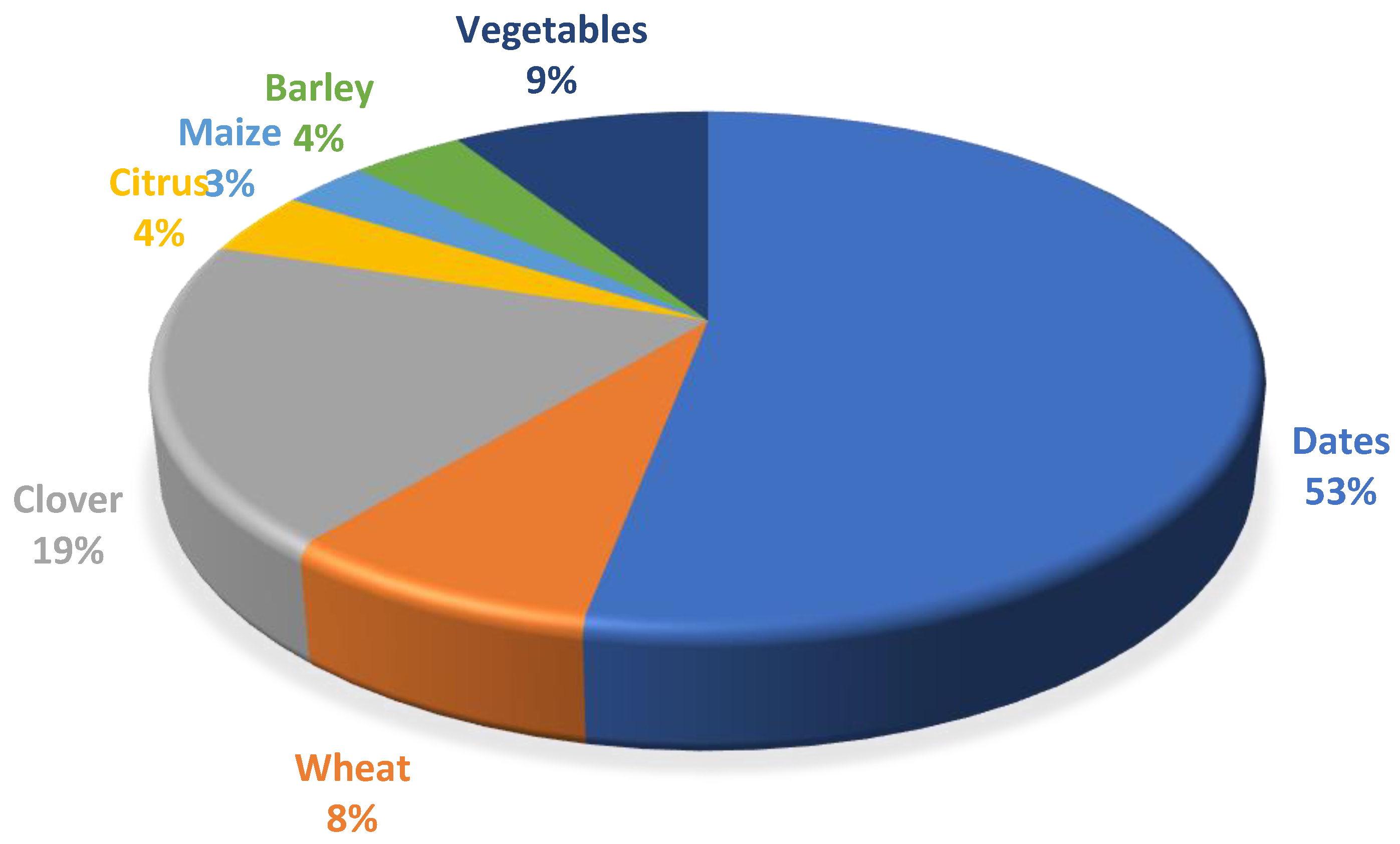
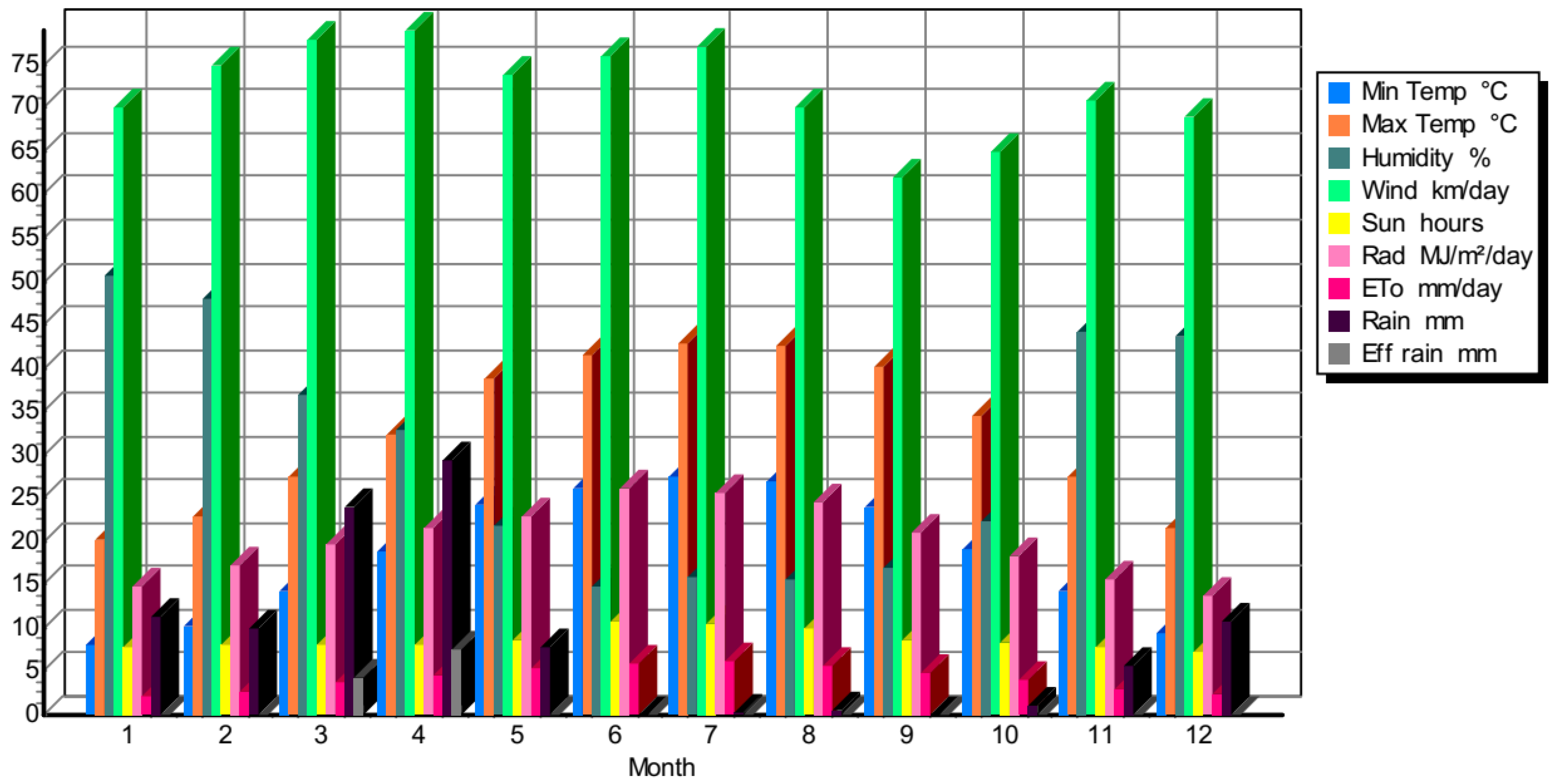


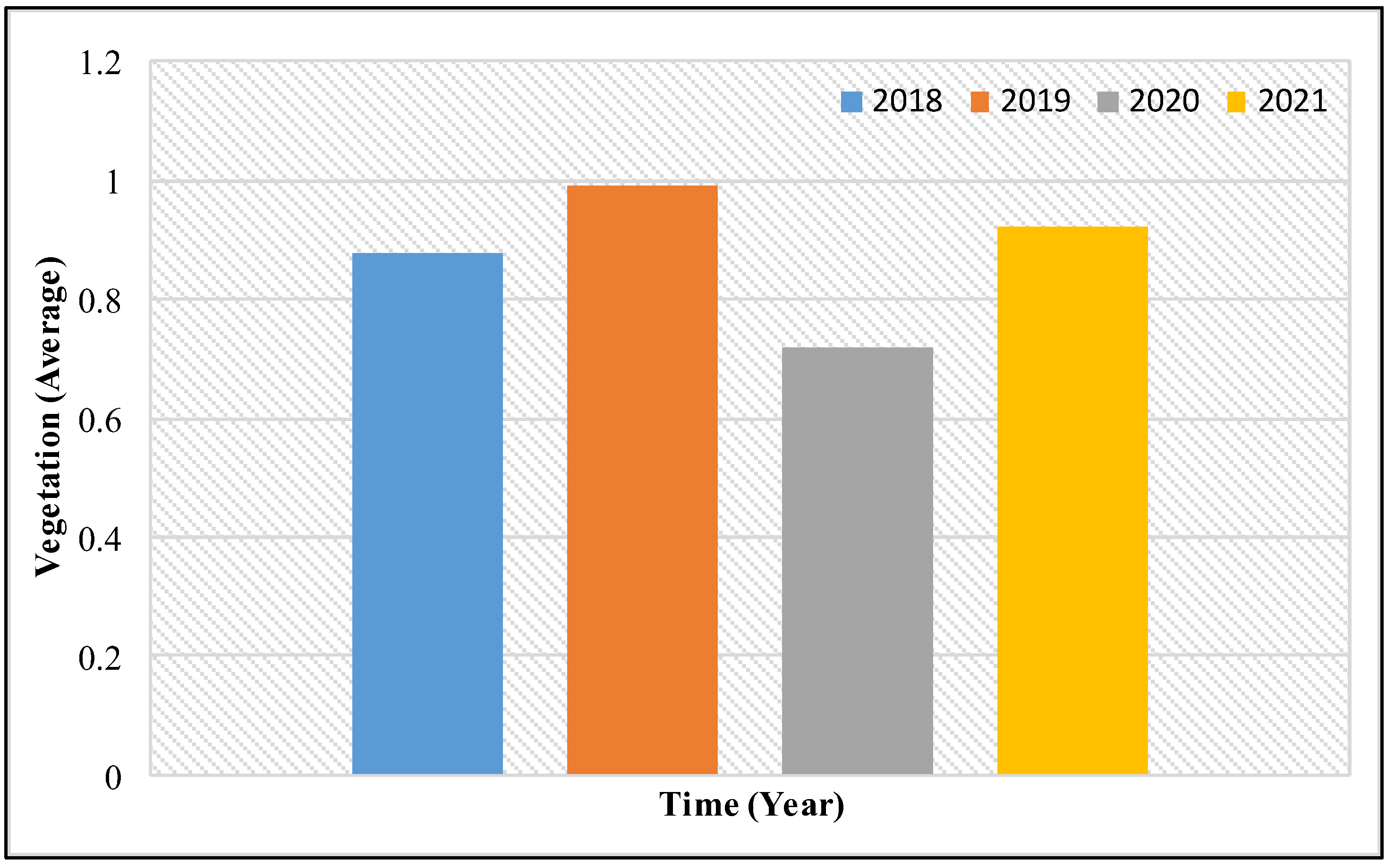

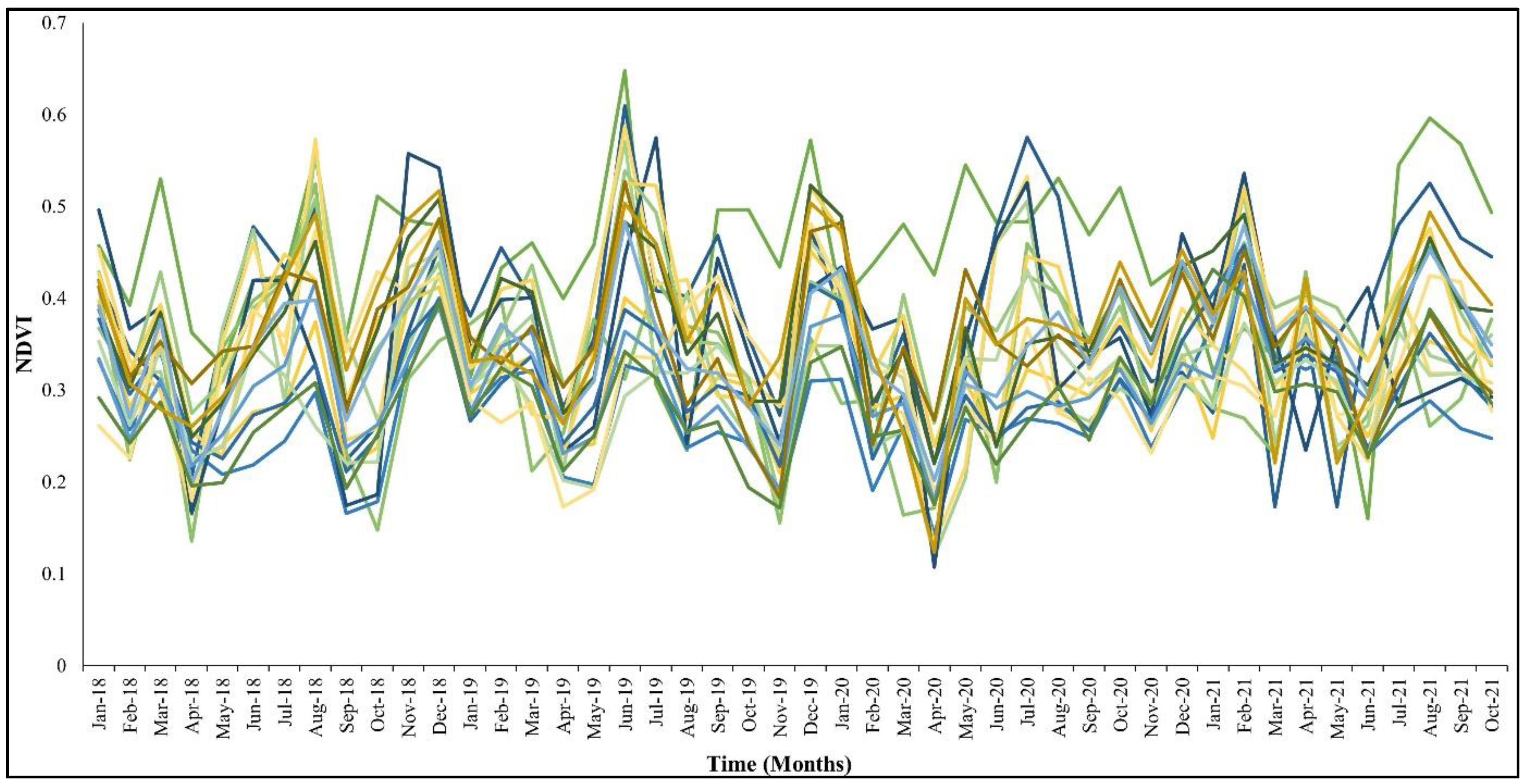


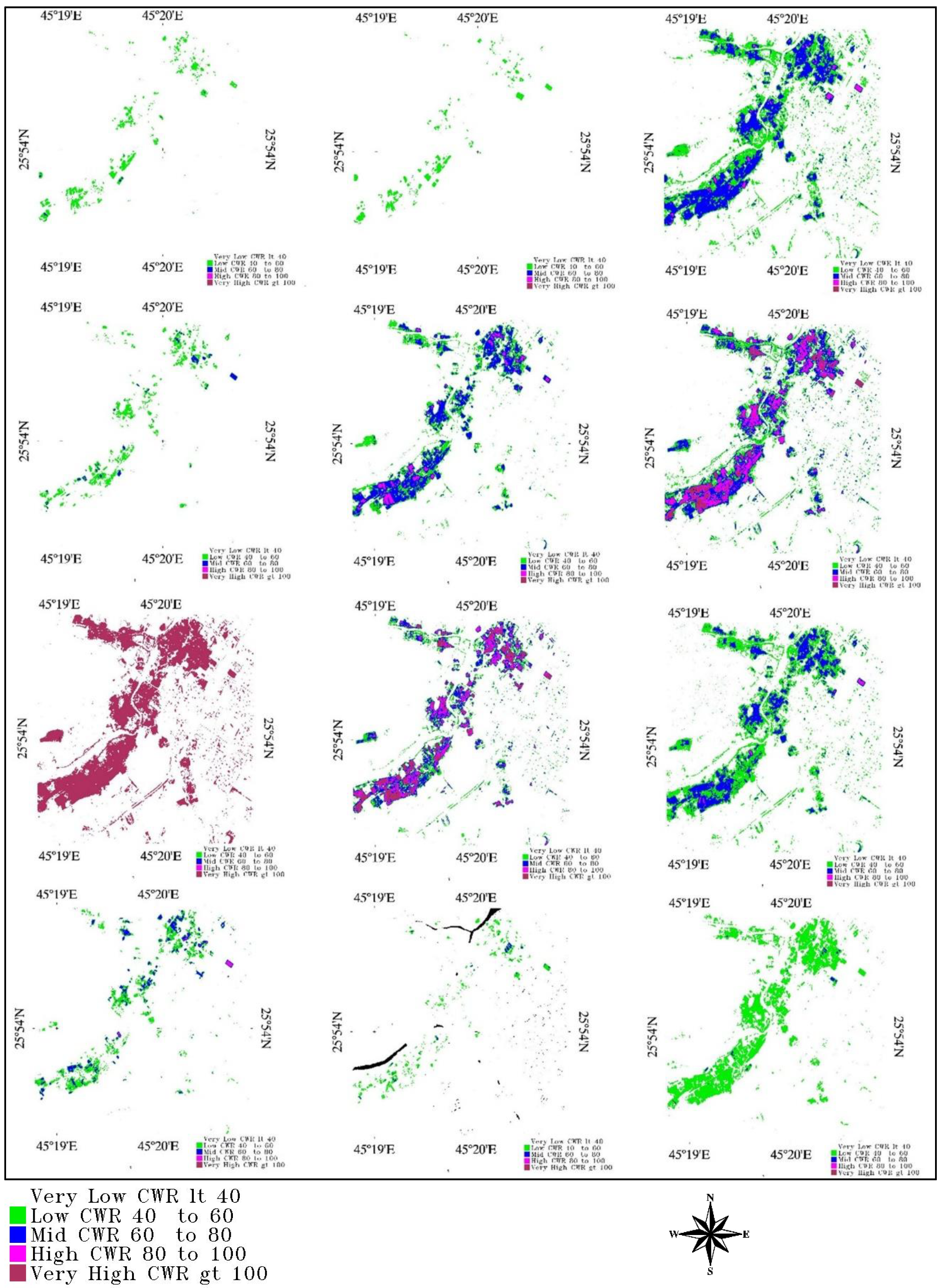
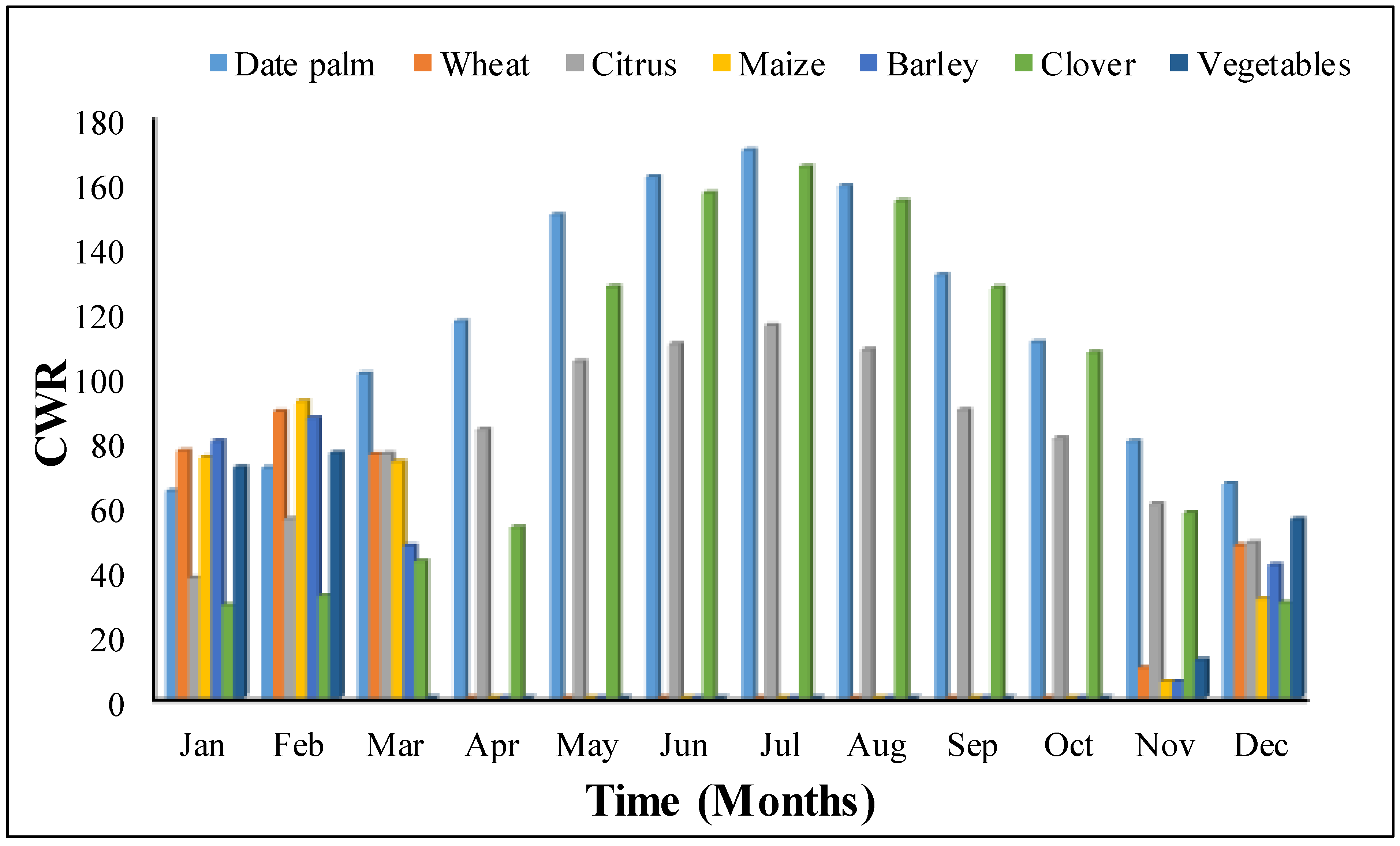
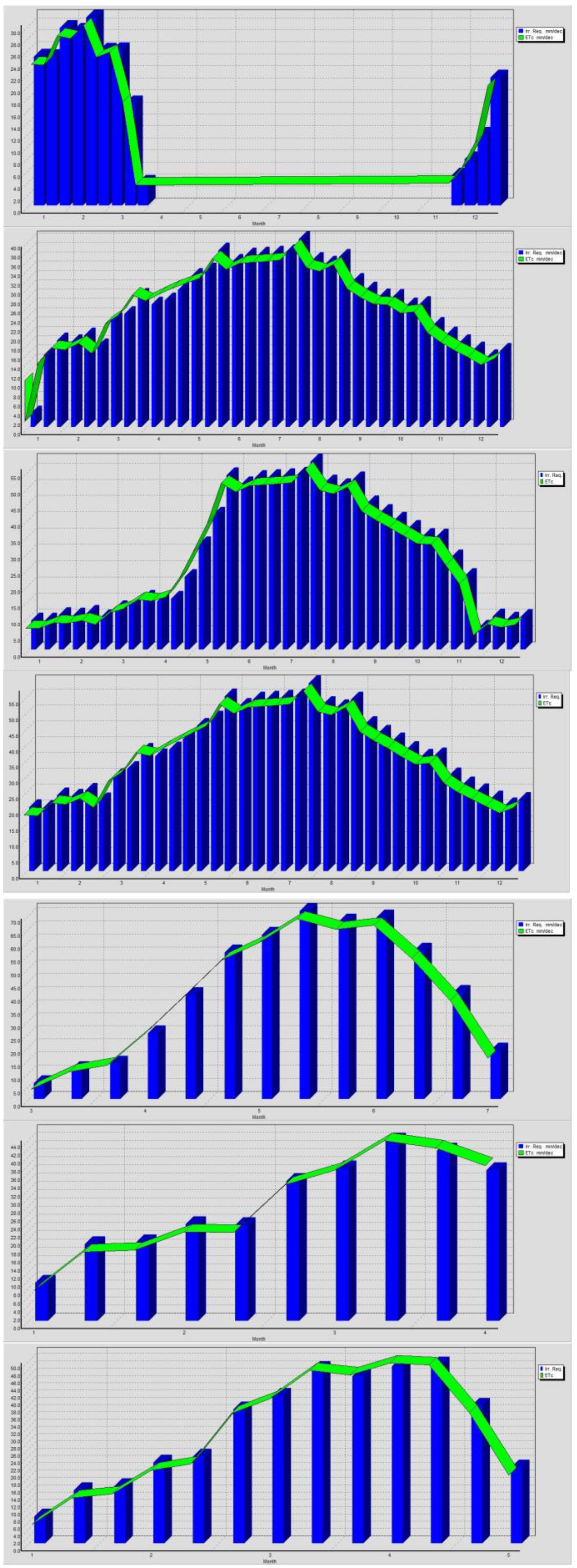
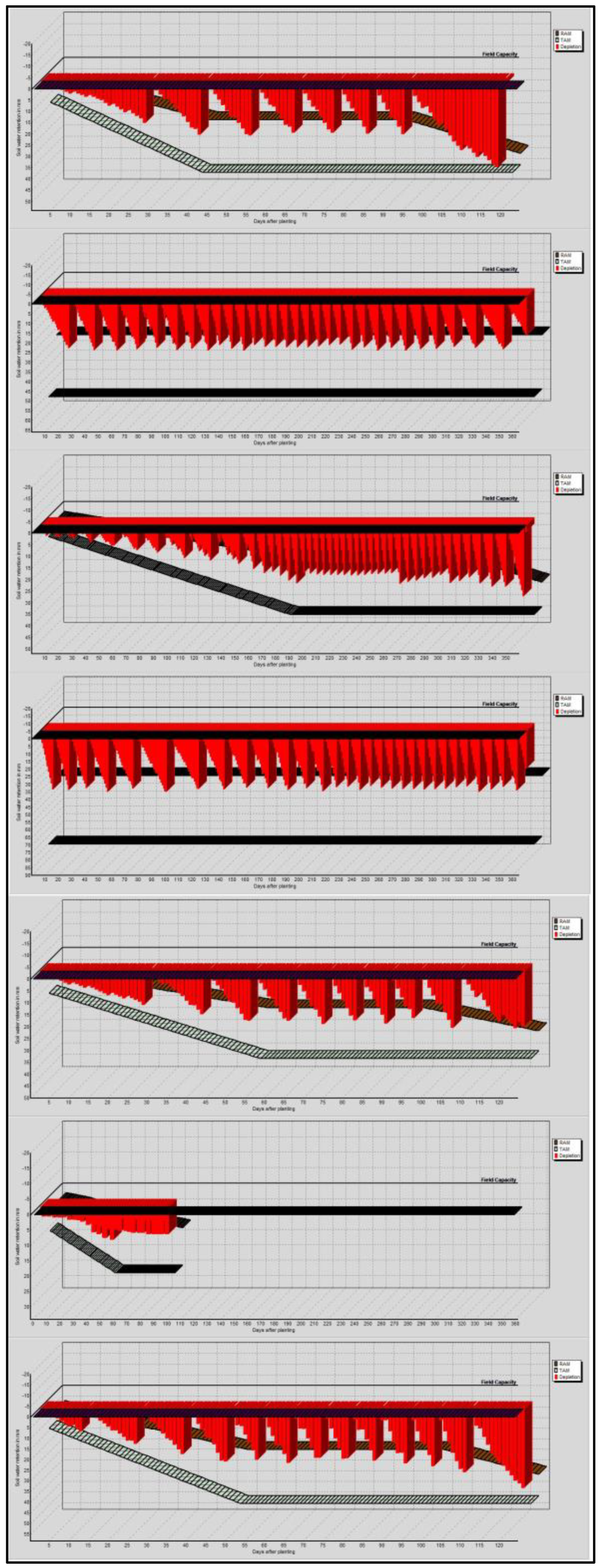
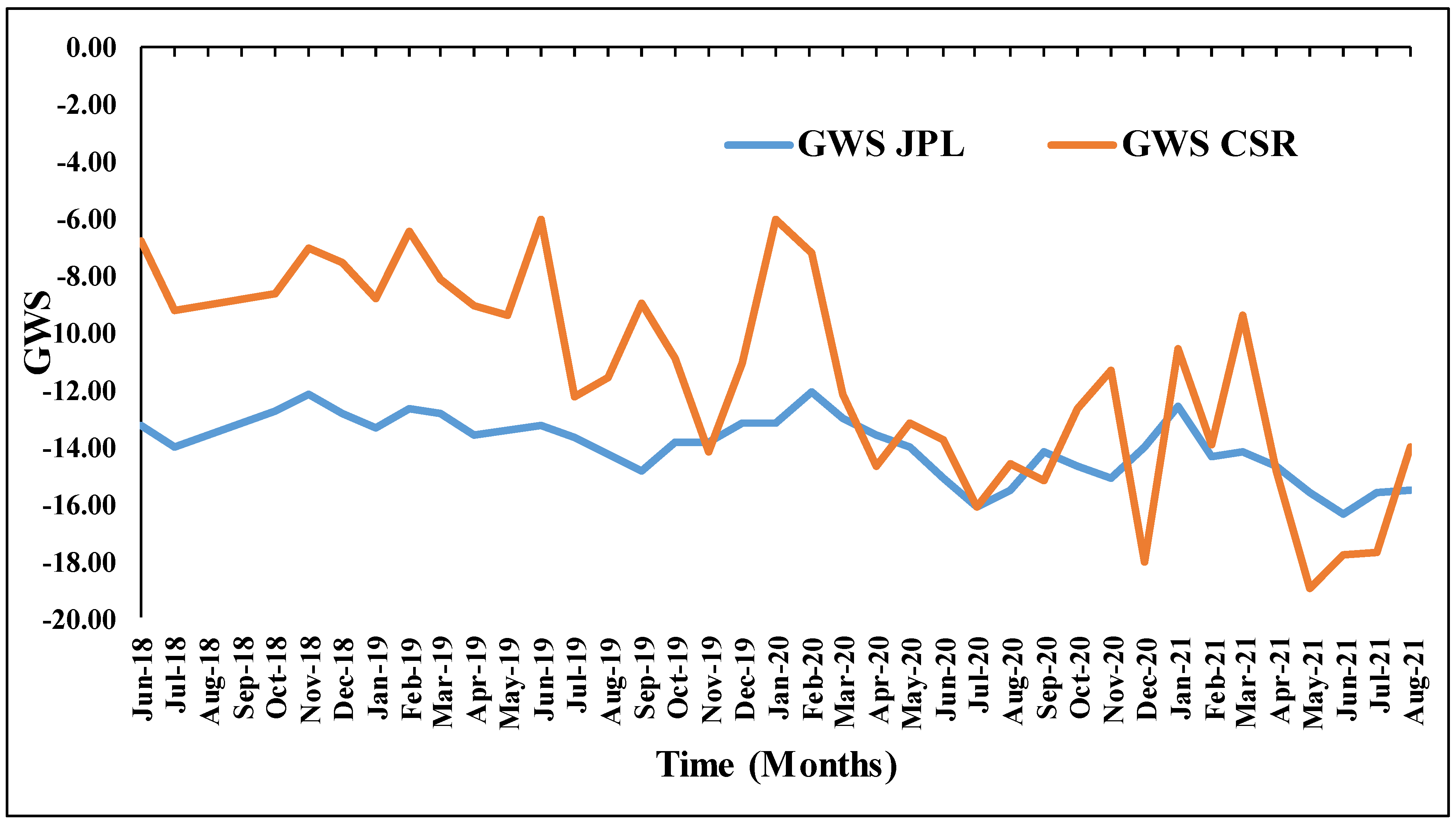
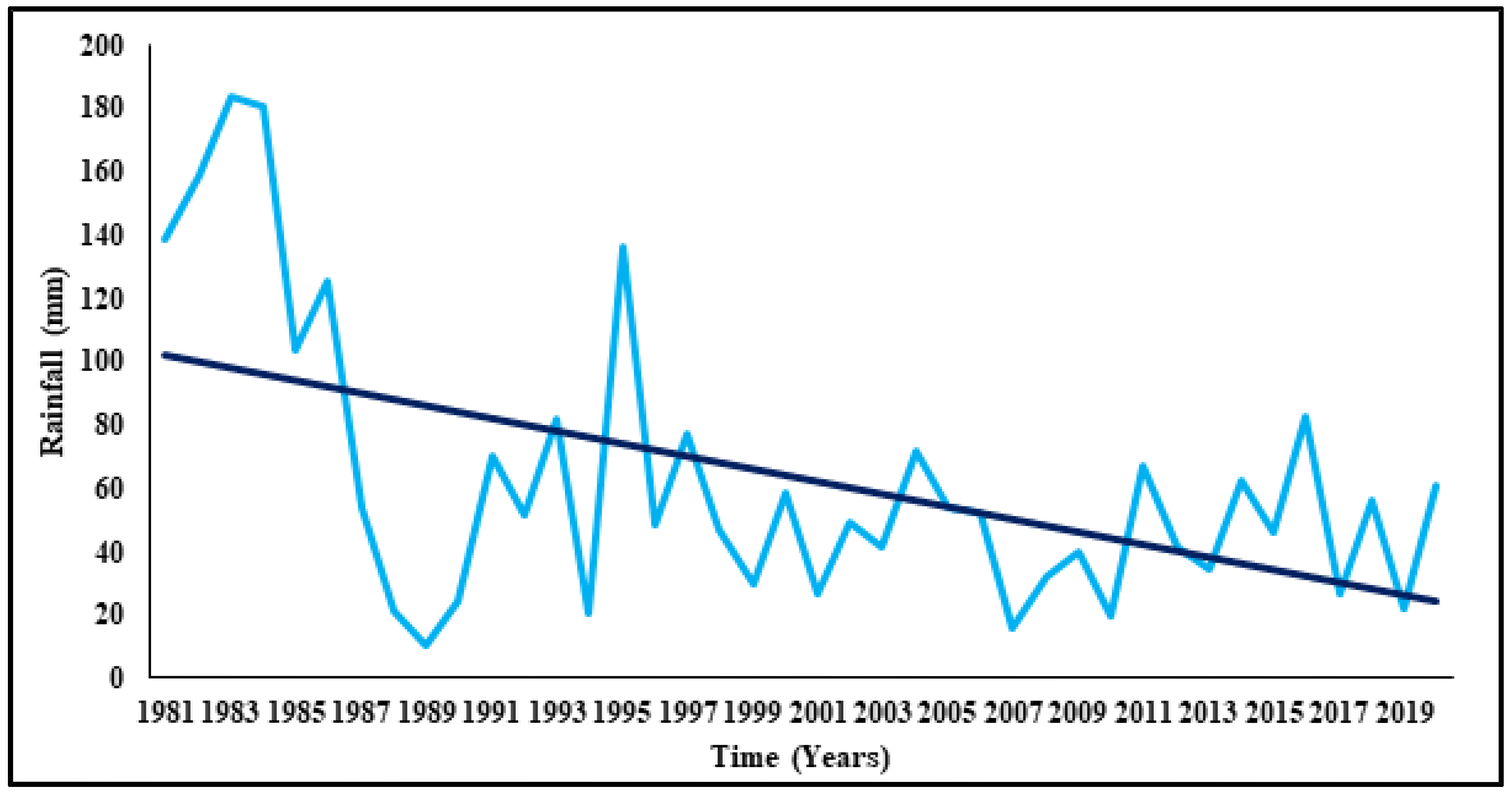

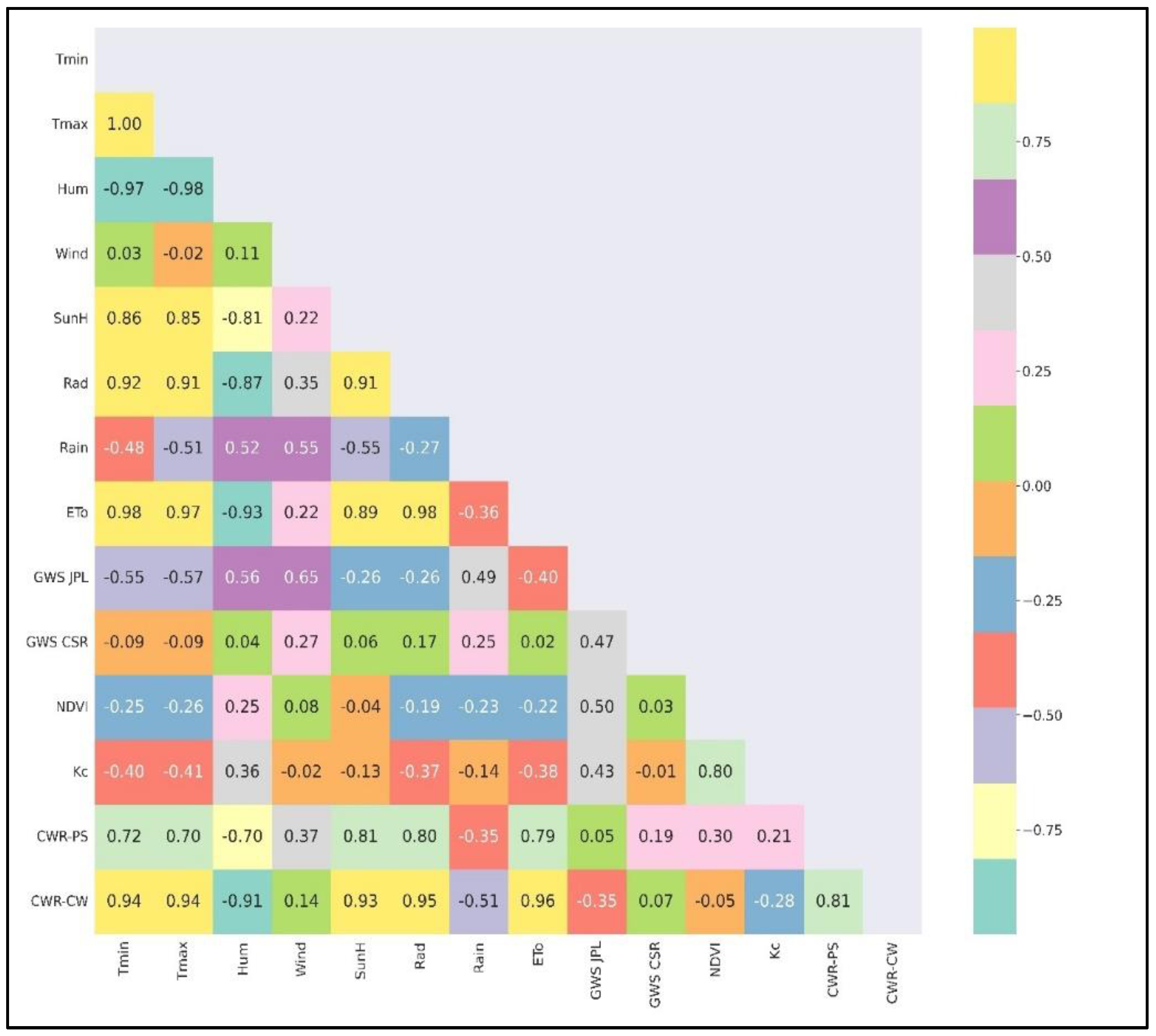
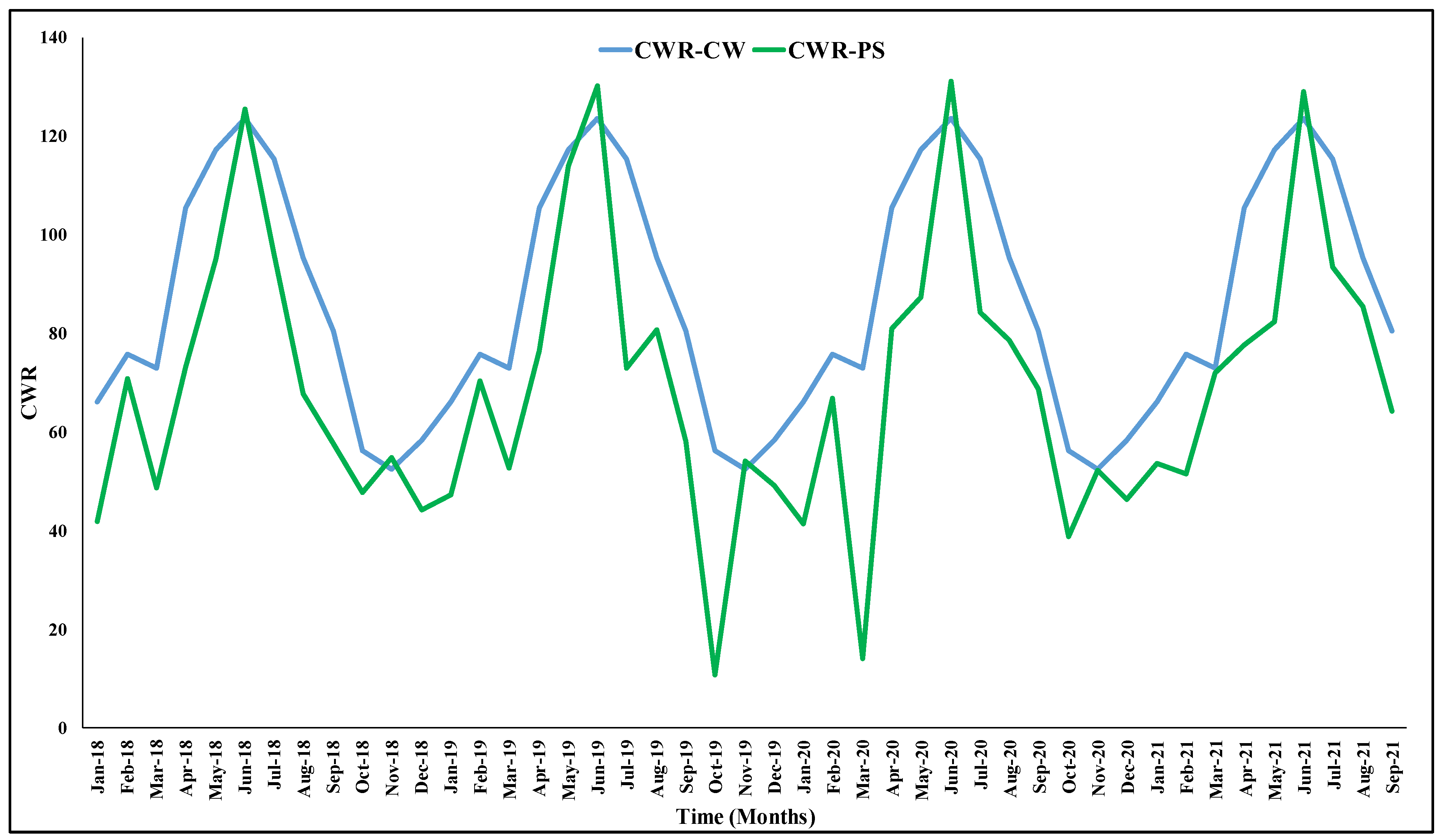
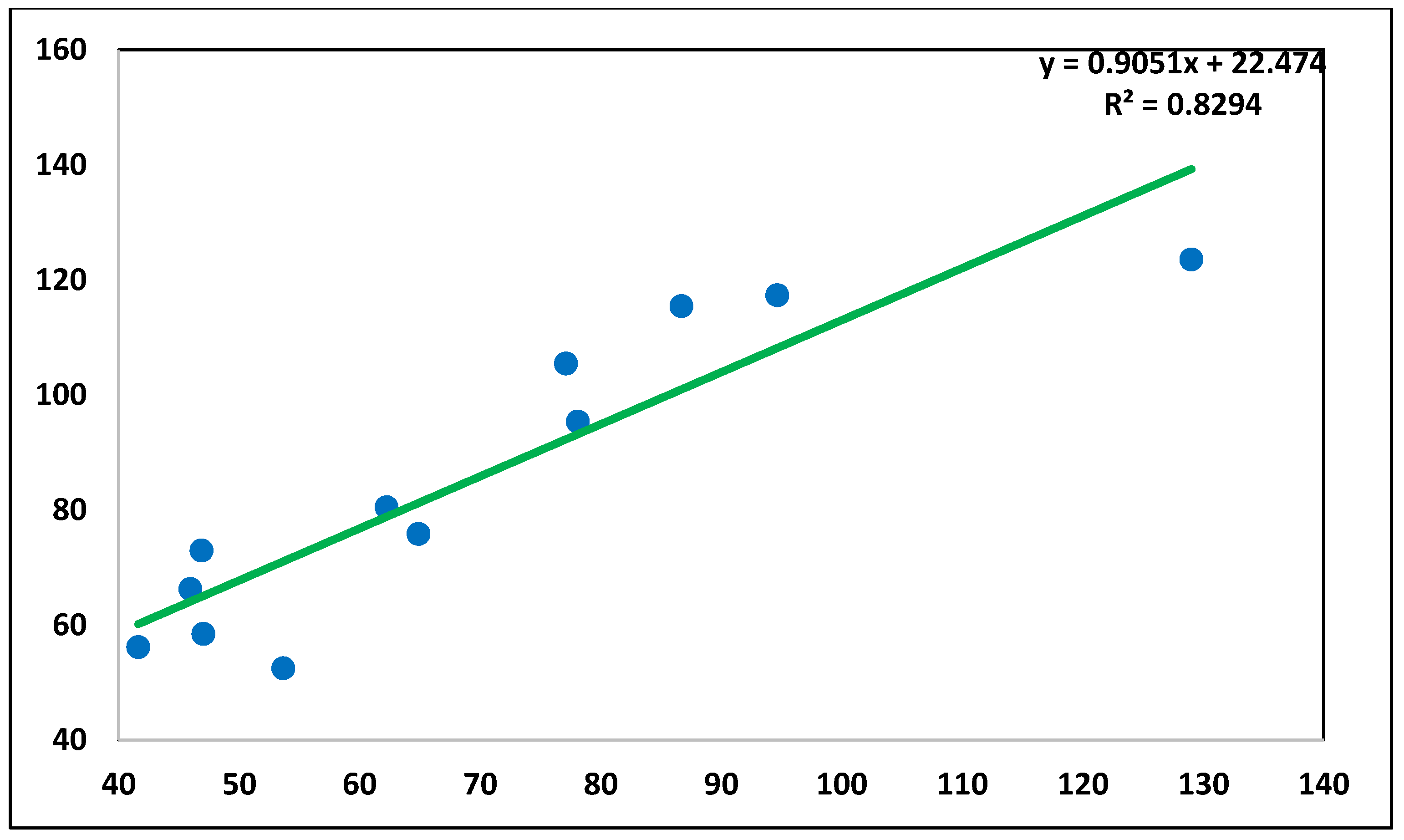
| Mean Daily Maximum Temperature (°C) | Mean Daily Minimum Temperature (°C) | Mean Humidity (%) | Wind Speed (km/Day) | Sun Hours/Day | Mean Annual Rainfall (mm) |
|---|---|---|---|---|---|
| 32.7 | 18.6 | 30 | 72 | 8.7 | 101.3 mm |
| Month | Scene ID | Spatial Resolution (m) | Month | Scene ID | Spatial Resolution (m) |
|---|---|---|---|---|---|
| 18 January | 20180121_065911_0f28 | 3 | 20 January | 20200122_070410_0e20 | 3 |
| 18 February | 20180218_065906_1029 | 3 | 20 February | 20200219_071627_1038 | 3 |
| 18 March | 20180327_070135_0f43 | 3 | 20 March | 20200329_071506_103c | 3 |
| 18 April | 20180426_070208_103a | 3 | 20 April | 20200412_072711_1105 | 3 |
| 18 May | 20180529_070354_0f4e | 3 | 20 May | 20200504_071729_103c | 3 |
| 18 June | 20180620_070422_102e | 3 | 20 June | 20200621_071817_1039 | 3 |
| 18 July | 20180724_070527_102e | 3 | 20 July | 20200718_071551_1003 | 3 |
| 18 August | 20180818_070608_101e | 3 | 20 August | 20200831_070155_0e20 | 3 |
| 18 September | 20180920_070618_1002 | 3 | 20 September | 20200929_071802_103b | 3 |
| 18 October | 20181013_070718_103c | 3 | 20 October | 20201031_071710_1010 | 3 |
| 18 November | 20181129_071100_1014 | 3 | 20 November | 20201125_071535_1002 | 3 |
| 18 December | 20181211_070937_0f51 | 3 | 20 December | 20201216_071648_0f17 | 3 |
| 19 January | 20190119_071002_1029 | 3 | 21 January | 20210126_045134_104e | 3 |
| 19 February | 20190221_071021_100c | 3 | 21 February | 20210216_071400_1009 | 3 |
| 19 March | 20190322_071038_100c | 3 | 21 March | 20210320_071540_1013 | 3 |
| 19 April | 20190429_071201_100e | 3 | 21 April | 20210420_071720_1008 | 3 |
| 19 May | 20190523_071253_101f | 3 | 21 May | 20210518_071452_1005 | 3 |
| 19 June | 20190628_071208_1035 | 3 | 21 June | 20210625_071517_1011 | 3 |
| 19 July | 20190722_070741_0e16 | 3 | 21 July | 20210728_071538_100a | 3 |
| 19 August | 20190818_071405_1011 | 3 | 21 August | 20210827_071350_1034 | 3 |
| 19 September | 20190927_070523_0e20 | 3 | 21 September | 20210927_071721_0f22 | 3 |
| 19 October | 20191022_071451_1027 | 3 | 21 October | 20211008_065131_0e0f | 3 |
| 19 November | 20191120_072215_1105 | 3 | 21 November | 20211126_073108_44_2307 | 3 |
| 19 December | 20191229_071744_1038 | 3 | 21 December | 20211203_073208_41_227a | 3 |
| Parameter | Kendall’s Tau | Sen’s Slope |
|---|---|---|
| NDVI | −0.01/year | 0 |
| Kc | 0.05/year | 0.02 |
| CWR | 1.3 mm/year | 0.38 |
| IWR | 1.1 mm/year | 0.34 |
| GWS CSR | −2.6 m/year | −0.59 |
| GWS JPL | −0.3 m/year | −0.08 |
| Tmax | 0.038 °C/year | 0.01 |
| Tmin | 0.037 °C/year | 0.01 |
| Humidity | 0.12/year | 0.04 |
| Wind speed | No Change | 0 |
| ETo | 0.1/year | 0.28 |
Publisher’s Note: MDPI stays neutral with regard to jurisdictional claims in published maps and institutional affiliations. |
© 2022 by the authors. Licensee MDPI, Basel, Switzerland. This article is an open access article distributed under the terms and conditions of the Creative Commons Attribution (CC BY) license (https://creativecommons.org/licenses/by/4.0/).
Share and Cite
Haq, M.A.; Khan, M.Y.A. Crop Water Requirements with Changing Climate in an Arid Region of Saudi Arabia. Sustainability 2022, 14, 13554. https://doi.org/10.3390/su142013554
Haq MA, Khan MYA. Crop Water Requirements with Changing Climate in an Arid Region of Saudi Arabia. Sustainability. 2022; 14(20):13554. https://doi.org/10.3390/su142013554
Chicago/Turabian StyleHaq, Mohd Anul, and Mohd Yawar Ali Khan. 2022. "Crop Water Requirements with Changing Climate in an Arid Region of Saudi Arabia" Sustainability 14, no. 20: 13554. https://doi.org/10.3390/su142013554






